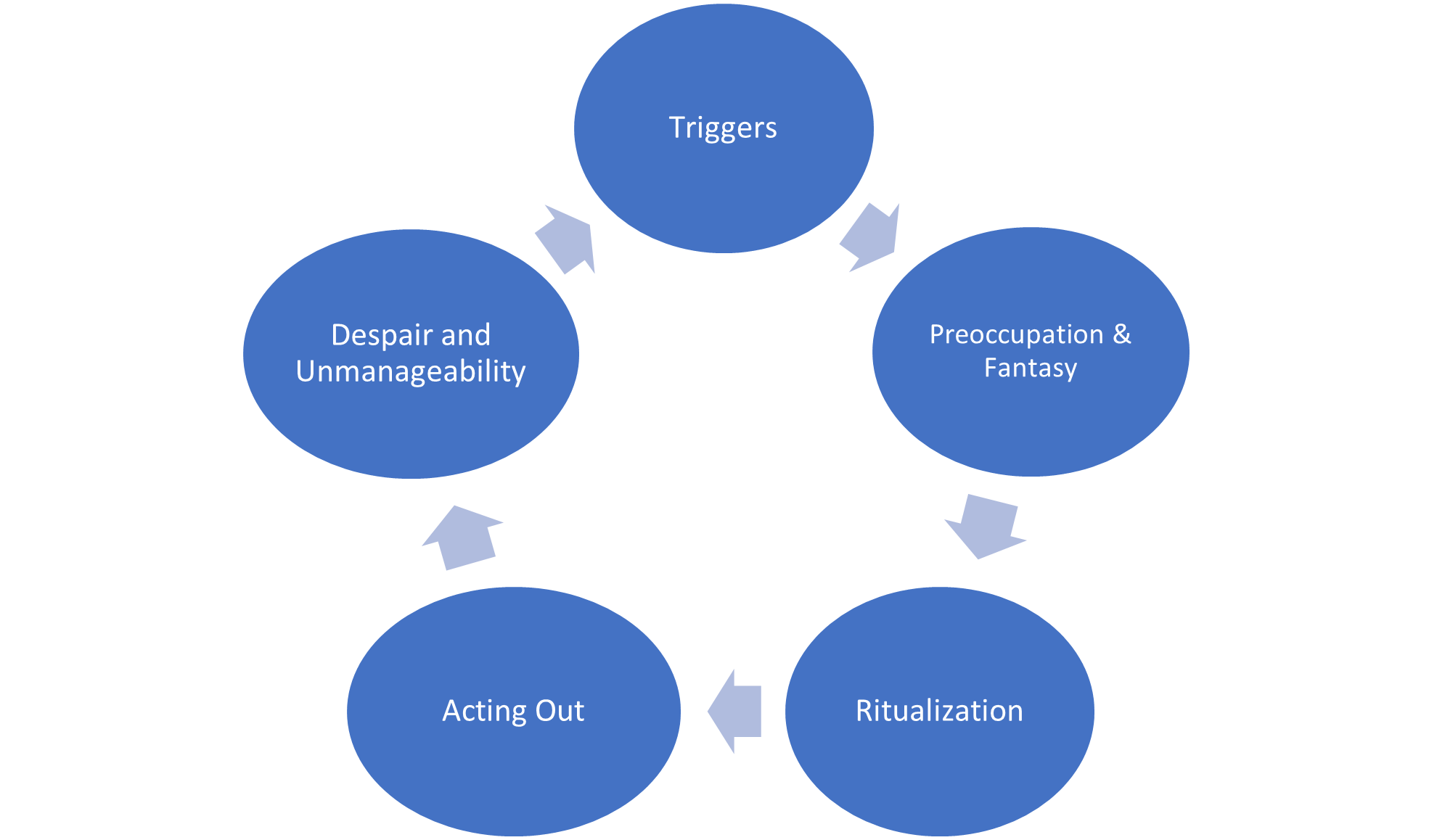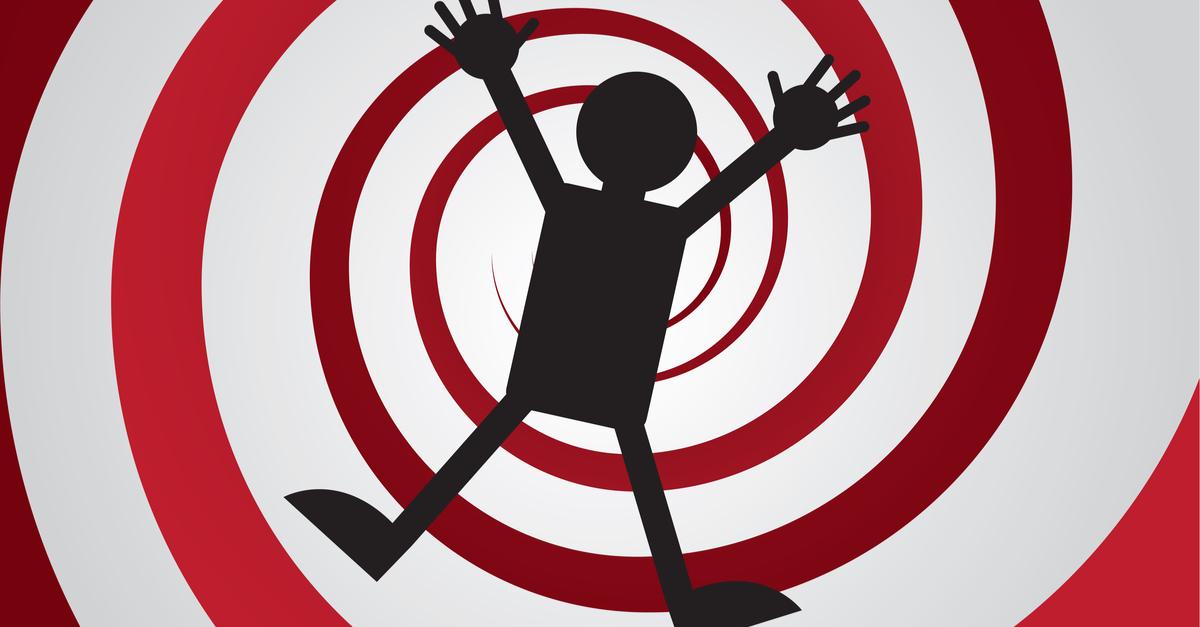 David Fawcett PhD
David Fawcett PhD
Addiction is characterized by far more than acting-out behaviors such as using drugs, alcohol, pornography, or having compulsive sex. Triggers launch addicts through the addictive cycle by leading them into preoccupation and fantasy, which, in turn, leads to ritualization. This is followed by acting out and, for those with co-occurring drug use and sexual behavior, can lead to excessive drug use, high-risk sex, and/or other self-destructive behaviors. Following acting out, the reality of what has occurred descends on the user resulting in shame, remorse, despair, and ever-increasing unmanageability. The consequences of the acting out behaviors and the ravages of the addiction itself inevitably lead back to the beginning of the cycle, where addicts are once again vulnerable to internal or external triggers.
Differing models describing the addiction cycle have been proposed, some much more complex than others. All describe a process of moving from precursor elements through focused preoccupation, ritualization, and, inevitably, acting out with all its ensuing consequences. Drawing on these concepts, I have devised a five-stage model for individuals who have co-occurring sex and drug use.
The Substance/Sex Addictive Cycle

The Addictive Cycle: Triggers
All addictive behaviors begin with cues or triggers that can be both external and internal, and both predictable and surprising. More than one addict has found himself or herself suddenly heading toward a relapse after being suddenly triggered. Thus, learning how to both avoid and manage these triggers is essential, as it is the most viable point at which the addictive cycle can be broken.
External triggers are people, places, things, activities, behaviors, and situations that can result in a craving. These may include people with whom you have used or acted out, a street where your dealer lives, the motel where you met your affair partner, or paraphernalia involved in your addiction, such as a pipe, an ATM machine, or even your phone. External triggers are best dealt with through avoidance. That said, once activated, any trigger can be defused with practice.
Internal triggers include thoughts and feelings. Internal triggers can be more difficult to identify and challenge than external triggers. They can include uncomfortable feelings such as fear, anxiety, guilt, shame, or depression. Some addicts are surprised to learn that a positive emotion such as feeling excited, passionate, or confident can be a trigger toward addiction. More often, however, internal triggers are related to normal but unpleasant emotions such as feeling lonely, embarrassed, sad, or bored.
Many clients who pair drugs and sex find that, in early recovery, they seek to recreate the intensity of “party and play” sex without the “party,” but quickly find that pornography, casual hookups, bars, fetishes, and any other reminder of the drug-sex association can trigger cravings, resulting in a high-risk situation. Much of this is fueled by changes in the arousal template, which has become altered with high-intensity fantasies designed to create the maximum rush of dopamine possible. Some of these scripts and fantasies are simply not conducive to recovery and must be left behind. Associations connecting drugs and sex to people, places, and things must be unlearned because they can steer addicts, both consciously and unconsciously, toward their primary acting out behaviors and drugs of choice.
The Addictive Cycle: Preoccupation and Fantasy
Triggering events, whether internal or external, drive addicts toward coping with emotional discomfort through addictive behavior(s). These old coping mechanisms are often rooted in early childhood, especially childhood trauma, when dissociation (disconnecting from the situation in one’s mind) was one of the few protective defenses available. Dissociation is a safety valve of sorts, helping someone emotionally survive a traumatic ordeal.
Fantasy becomes the primary method for dealing with uncomfortable emotions, thoughts, or events, and it is through fantasy that addicts fall into euphoric recall, selectively remembering only the positive aspects of their addictive behavior such as heightened energy or sexual arousal. Negative aspects of their addictive behaviors are minimized or “forgotten.” The more that addicts romanticize the addictive experience in their fantasies, the greater the chance they will actually out.
Dropping into fantasy (also known as the bubble, or the trance) about drug use, sex, or any acting out behavior moves addicts from being triggered toward ritualization and acting out.
Fantasy is more than just a bad habit for addicts. Studies indicate that simply thinking about using drugs or acting out, or even going on sexual hookup apps can trigger the flow of dopamine and anticipation. The longer one remains immersed in the preoccupation (the fantasy), the greater the likelihood that one will pass the point of no return.
Having trained their brains to anticipate pleasure through certain behaviors, addicts start to become preoccupied about making this a reality. Impulses to use and act out flow with strong force from the midbrain while the neocortex, the “adult” thinking self, gradually goes offline. In effect, the gas pedal is pushed to the floor and the brakes begin to fail. With this, the brain starts giving addicts an anticipatory dopamine reward, which further increases cravings.
The Addictive Cycle: Ritualization
The ritualization of drugs and sex is a phase of the addiction cycle that bridges preoccupation and fantasy. With ritualization, users spend a great deal of time in anticipation of the next stage – acting out. Ritualization can encompass a broad range of behaviors, including clearing time in one’s schedule; securing drugs; preparing paraphernalia, cash, or other items; and cruising for potential sexual partners. Certain kinds of porn may be used along with other behavioral patterns. The elements of ritualization, taken together, create an essential part of the addictive experience that is, in many cases, as pleasurable as acting out itself. In fact, many sex addicts delay orgasm because orgasm can mean the end of the mood-altering anticipation and fantasy.
Some rituals can be triggered without conscious awareness. Many addicts, for example, have trouble with transitional times such as the end of the workday. They find their risk is heightened and, in recovery, they may choose to go directly after work to an early evening meeting. Fridays, finishing a project, paying bills, hanging up after an argument, and taking a drug to “set the mood” before going out are all examples of routine events that can become ritualized and lead to acting out.
The Addictive Cycle: Acting Out
Depending on one’s addictive patterns, acting out encompasses a wide variety of drug use and sexual behaviors. It can include watching porn, high-risk sexual activities and scenarios, or relations with long-standing affair partners or numerous anonymous people. Acting out behaviors will cause regret and remorse once this phase is over. Because the acting out period can extend over a period of days, other activities are also common, such as endless hours of cruising online for additional sex partners and trying to find the right mix of drugs and downtime to “edge” along the high. Hours can become days and, toward the end of a run, addicts can spend increasing amounts of time managing the effects of their acting out behaviors, particularly the sleeplessness, agitation, and paranoia that certain drugs can create.
Acting out inevitably creates consequences – high levels of chaos, painful emotions, and lots of regret and shame – and addicts use a number of automatic defensive thinking patterns in response. These can include using other addictive behaviors to mitigate consequences (“chilling out” with Xanax for a few days to “recover” from a sex binge) or employing a set of defenses that distort reality. Examples of these so-called cognitive distortions include rationalizing statements such as, “If my girlfriend would lose weight, I wouldn’t look for sex elsewhere,” or efforts to minimize what just occurred like, “It was only a little cocaine. What’s the harm?” Despite such defenses, a crash inevitably follows acting out behavior in which the physical and emotional reality collapses on the addict, creating despair and remorse.
The Addictive Cycle: Despair and Unmanageability
The final phase of the addiction cycle is one that is familiar to any addict: feelings of remorse and despair. For those engaging in co-occurring sex and drug use, this is the moment when a user’s dopamine and other neurotransmitters and neurochemicals are depleted, their bodies are exhausted, and their emotions have dropped from the anticipation and euphoria earlier in the cycle to the awakening realization of what they have done – once again. They may have missed important events, had high-risk sex, and made many poor choices. They may even have been the victim of physical and/or sexual assault. With these realizations come a crash in mood and a flood of negative emotions.
It is during this “despair” phase that addicts promise never to repeat those behaviors again. The feelings of shame and remorse, and sometimes even panic, can create a window for behavior change and recovery. This is the moment when the spell is broken and addicts temporarily have insight into their situation and, sometimes, the willingness to change. Very often, once the mind and body have begun to recover, this resolve slips away and addicts once again become vulnerable to triggers.
Because addicts have significantly impaired ability to manage their emotions and lack the resilience to cope with adverse situations, the unmanageability created by each stage of the addictive cycle inevitably leads back to the beginning, reinforcing negative beliefs and fueling the initiation of another run through the cycle.
